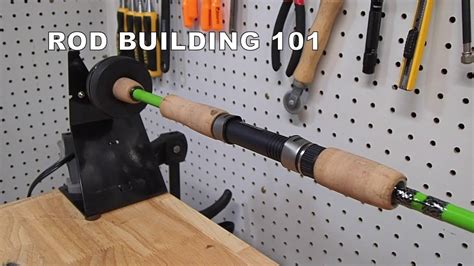Build Your Own Fishing Rod: At a Fraction of the Cost
Building your own fishing rod might sound daunting, but it's a surprisingly rewarding and cost-effective project. With readily available components and a little patience, you can craft a custom rod perfectly suited to your fishing style for a fraction of the price of a comparable store-bought model. This guide will walk you through the process, equipping you with the knowledge and confidence to tackle this exciting DIY endeavor.
Why Build Your Own Fishing Rod?
The primary advantage is cost savings. High-quality fishing rods can be expensive, especially those tailored to specific techniques. Building your own allows you to control costs by selecting components within your budget, potentially saving hundreds of dollars.
Beyond cost, building your own rod offers unparalleled customization. You can choose the length, action (how much it bends under pressure), power (how much weight it can handle), and handle materials to perfectly match your fishing style and preferred species. This level of personalization is rarely achievable with off-the-shelf rods.
Finally, the process itself is incredibly satisfying. The pride of holding a rod you've built from scratch is unmatched. It's a rewarding experience that connects you more deeply to the sport of fishing.
What You'll Need: Choosing Your Components
Before you start, you'll need to gather your materials. The specific components will depend on your desired rod specifications (length, power, action), but here's a general list:
- Blank: This is the foundation of your rod, the un-finished rod shaft. Blanks are available in various materials (graphite, fiberglass, composite), lengths, powers, and actions. Choose a blank that aligns with your target species and fishing style.
- Guides: These ceramic rings guide the fishing line along the blank, reducing friction and improving casting distance. Choose guides appropriate for your chosen line weight and rod type.
- Reel Seat: This securely holds your fishing reel to the rod. Select a reel seat compatible with your reel's size and foot.
- Handle Components: This includes the foregrip (the part you hold closer to the reel) and the rear grip (the part furthest from the reel). Popular handle materials include cork, EVA foam, and rubber.
- Epoxy Resin: This strong adhesive binds all the components together.
- Sandpaper: Various grits for smoothing and finishing.
- Rod Building Kit: These kits often include essential tools like guide threaders, guide wrapping tools, and a measuring jig.
Step-by-Step Guide to Building Your Fishing Rod
This process requires meticulous attention to detail, but it's manageable even for beginners.
1. Prepare the Blank: Clean the blank thoroughly with alcohol to remove any oils or contaminants.
2. Attach the Guides: This is the most intricate part. Using the epoxy resin and your chosen method (wrapping or gluing), securely attach the guides to the blank following the guide placement information provided with the blank. Ensure proper spacing and alignment for optimal performance.
3. Install the Reel Seat: Once the guides are set, carefully position and secure the reel seat using epoxy resin.
4. Attach the Handle Components: Apply epoxy resin to the handle components and securely attach them to the blank. Ensure a snug fit and even application of the resin.
5. Curing and Finishing: Allow the epoxy resin to cure completely according to the manufacturer's instructions. Once cured, carefully sand and finish the rod to remove any excess resin and create a smooth, professional-looking finish.
Troubleshooting Common Issues
- Guide Alignment: Incorrect guide alignment can significantly impact casting performance. Pay close attention to the manufacturer's recommendations.
- Epoxy Application: Too much or too little epoxy can weaken the rod. Follow the instructions carefully.
- Curing Time: Insufficient curing time can lead to a weak and unreliable rod. Allow ample time for complete curing.
What materials are best for building a fishing rod?
The best materials depend on your needs and budget. Graphite blanks offer lightweight strength and sensitivity, making them ideal for many applications. Fiberglass blanks are more durable and forgiving, suitable for beginners or anglers who prefer a more robust rod. Cork and EVA foam are popular choices for handles, offering comfort and durability.
How much does it cost to build a fishing rod?
The cost can vary significantly depending on your choice of components. However, you can generally build a high-quality rod for significantly less than the cost of a comparable store-bought rod.
What tools do I need to build a fishing rod?
A rod-building kit often includes all the necessary tools: guide threaders, guide wrapping tools, a measuring jig, and possibly a rod clamp.
Where can I buy fishing rod blanks and components?
Many online retailers and specialized tackle shops sell rod blanks, guides, reel seats, and other components.
Building your own fishing rod is a fulfilling project that combines craftsmanship, creativity, and a deep appreciation for the sport of fishing. With careful planning and attention to detail, you can create a custom rod that perfectly meets your needs at a fraction of the cost of a store-bought alternative. So grab your materials and get started on your DIY fishing rod adventure!

